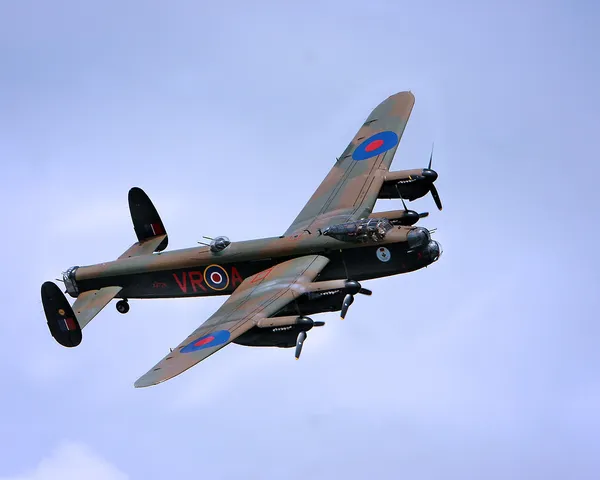Hamilton, Dale Mcgowan (Pilot Officer)
Killed in Action 1944-October-14


Birth Date: 1924-March-20
Born:
Parents:
Spouse:
Home: New Westminster, British Columbia
Enlistment:
Enlistment Date: unkown date
Service
RCAF
Unit
115 (B) Sqn- Squadron (RAF)
Despite The Elements
Base
Witchford
Rank
Pilot Officer
Position
Air Gunner
Service Numbers
J/95155
Prev: R/221768
Target
Crew or Other Personnel
Lancaster ND805
Mission
Lancaster Mk.III ND805
Bombing Duisburg Germany 1944-October-14 to 1944-October-14
115 (B) Sqn (RAF) Witchford
Hurricane (Duisburg)
This raid was part of a special operation which has received little mention in the history books. On 13 October, Sir Arthur Harris received the directive for Operation Hurricane: 'In order to demonstrate to the enemy in Germany generally the over-whelming superiority of the Allied Air Forces in this theatre ... the intention is to apply within the shortest practical period the maximum effort of the Royal Air Force Bomber Command and the VIIIth United States Bomber Command against objectives in the densely populated Ruhr.' Bomber Command had probably been forewarned of the directive because it was able to mount the first part of the operation soon after first light on 14 October. No heavy bombers had flown on operations for 48 hours and 1,013 aircraft - 519 Lancasters, 474 Halifaxes and 20 Mosquitoes - were dispatched to Duisburg with R.A.F. fighters providing an escort. 957 bombers dropped 3,574 tons of high explosive and 820 tons of incendiaries on Duisburg. 14 aircraft were lost - 13 Lancasters and 1 Halifax; it is probable that the Lancasters provided the early waves of the raid and drew the attention of the German Flak before the Flak positions were overwhelmed by the bombing.
For their part in Operation Hurricane, the American Eighth Air Force dispatched 1,251 heavy bombers escorted by 749 fighters. More than 1,000 of the American heavies bombed targets in the Cologne area. American casualties were 5 heavy bombers and 1 fighter. No Luftwaffe aircraft were seen.<source: The Bomber Command War Diaries, Martin Middlebrook and Chris Everitt
115 Squadron (Despite The Elements), Witchford, England. Lancaster aircraft ND 805 failed to return from daylight operations at Duisburg, Germany.
The crew: Flying Officer David Mayson Price RCAF pilot J/25375 KIA Runnymede Memorial Panel 248; Flying Officer Clyde George Redden RCAF J/35732 KIA Runnymede Memorial Panel 248; Sergeant F M French RAF POW camp not identified; Flying Officer Roy S Johnston RCAF J/15430 POW camp not identified; Pilot Officer Joseph Charles Brunning RAFVR 185379 KIA; Pilot Officer Douglas Stewart Haggis RCAF J/95154 KIA Runnymede Memorial Panel 250; Pilot Officer Dale McGowan Hamilton RCAF J/95155 KIA Reichswald Forest War Cemetery - grave 16. D. 2.
Lancaster serial: ND805

Canadian Warplane Heritage Museum
The Avro Lancaster is a British Second World War heavy bomber. It was designed and manufactured by Avro as a contemporary of the Handley Page Halifax, both bombers having been developed to the same specification, as well as the Short Stirling, all three aircraft being four-engined heavy bombers adopted by the Royal Air Force (RAF) during the same wartime era.
The Lancaster has its origins in the twin-engine Avro Manchester which had been developed during the late 1930s in response to the Air Ministry Specification P.13/36 for a capable medium bomber for "world-wide use". Originally developed as an evolution of the Manchester (which had proved troublesome in service and was retired in 1942), the Lancaster was designed by Roy Chadwick and powered by four Rolls-Royce Merlins and in one version, Bristol Hercules engines. It first saw service with RAF Bomber Command in 1942 and as the strategic bombing offensive over Europe gathered momentum, it was the main aircraft for the night-time bombing campaigns that followed. As increasing numbers of the type were produced, it became the principal heavy bomber used by the RAF, the Royal Canadian Air Force (RCAF) and squadrons from other Commonwealth and European countries serving within the RAF, overshadowing the Halifax and Stirling. Wikipedia
Unit Desciption
115 (B) Sqn Despite The Elements ()
No. 115 Sqn was originally formed on Dec 1, 1917 as a heavy bomber squadron and joined the Independent Air Force of the RAF in August 1918. It was disbanded in 1919, then re-formed in June 1937. It formed part of RAF Bomber Command No. 3 Group in WWII. Starting with Handley Page Harrow aircraft, it transferred to Vickers Wellingtons in 1939, which it flew until March 1943, when it transferred to Avro Lancaster B. Mk. II and later B. Mks I and III. Between April 1940 and September 1942 the squadron was seconded to Coastal Command and based at Kinloss, Scotland. It rejoined Bomber Command and flew from Mildenhall, East Wretham and Little Snoring in 1942 and 1943 before settling at Witchford, Cambridgeshire from November 1943 until the end of hostilities.
In April 1940 the squadron made the RAF's first bombing attack on the mainland of Europe, at Stavanger in Norway. In August of 1941 it participated in the service trials of the new navigational aid, GEE, and as a result of its report the device was put into mass production. Overall, in WWII the squadron flew 5392 sorties and dropped about 23,000 tons of bombs. This was the second-highest tonnage of bombs in Bomber Command. The squadron was 3rd in the number of raids in the course of the war. Since it was active over the whole span of WWI, it lost the greatest number of aircraft of any squadron in Bomber Command: it was the only squadron to lose more than 200 aircraft.




